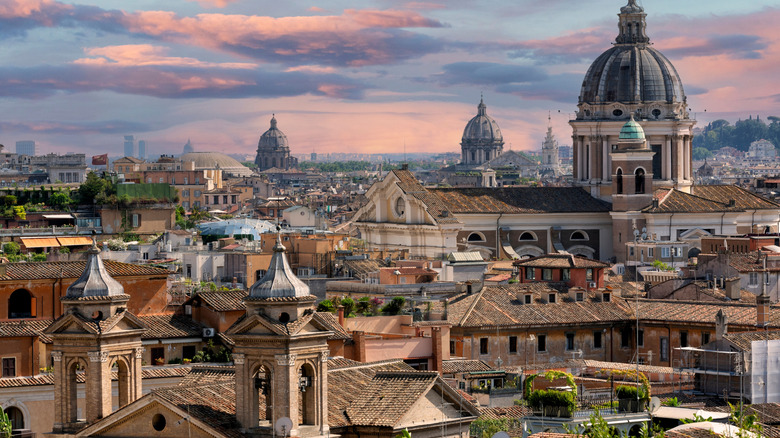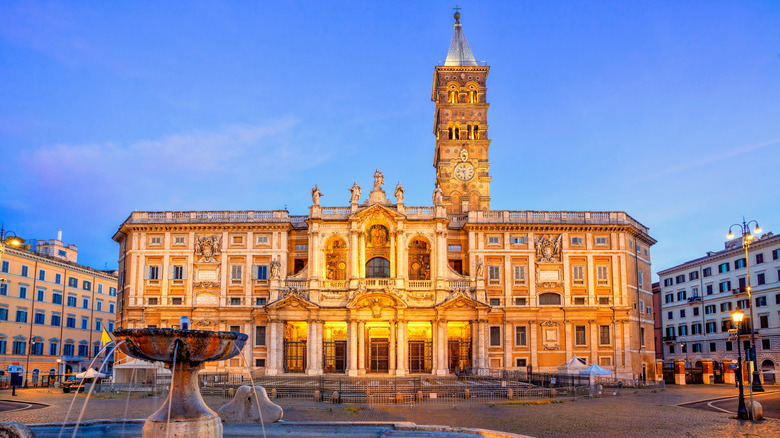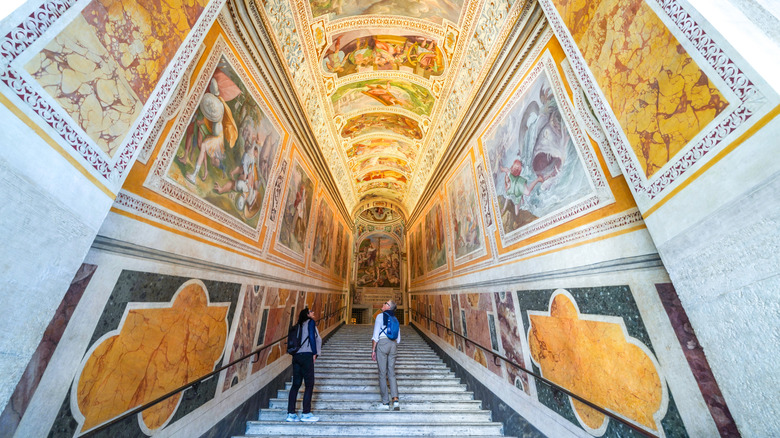We may receive a commission on purchases made from links.
Visitors to the Italian capital of Rome would do well to remember that the city isn’t just about taking in breathtaking views of the Colosseum, plus dodging a whole lot of speeding Vespas. Rome is not only one of the most significant cities of the entirety of Western history, it’s also where we get the whole “Roman” part of “Roman Catholicism.” When the Roman emperor Constantine converted to Christianity in 312, he paved the way for Christianity to become Rome’s state religion during the reign of Theodosius I in 380. From the very first de facto pope, St. Peter the Apostle of Jesus, to Cardinal Robert Prevost, who became the pope in 2025, papal presence saturates Rome — and you’ll likely encounter it when visiting the Italian destination. Thankfully, travel guide author Rick Steves has a book recommendation that can help us wade through Rome’s pope-related sights: “Saints and Sinners” by Eamon Duffy.
First published in 1987 during the long-serving tenure of Pope John Paul II (from 1978 to 2005), “Saints and Sinners” has been updated multiple times over the years, most recently in 2015 during the time of Pope Francis. On his website, Steves summarizes the 1997 edition of the book as, “Everything you always wanted to know about the popes, but were afraid to ask,” and includes it in his list of recommended books and movies about Italy. “Saints and Sinners” chronicles the passage of papal Christianity all the way back to the origins of papal Rome, highlighting every prominent pope-related Roman site along the way.
Visiting the four major papal basilicas
Out of all of the capital’s pope-related sites, its four basilicas sit at the top of the list, and you should visit at least one, even if you only have one day in Rome. A basilica differs from a church or cathedral because it’s been granted some special status by a pope. Simply standing in the vicinity of these stunning structures, knowing the centuries they’ve seen and their importance to Christianity, is extremely moving. All four papal basilicas in Rome date to the Roman empire, meaning that “Saints and Sinners” covers them early on. The oldest of these, the Basilica of St. John in Lateran, dates back to around 318 during the reign of Pope Sylvester I (314 to 335) and has a powerful, dark, almost Gothic feel to its interior. Pope Sylvester I also consecrated the next oldest basilica, the Basilica of Saint Paul Outside the Walls. Looking like it was dropped straight from antiquity into the present, the basilica’s marble columns and golden, decorative ceiling are truly jaw-dropping.
St. Peter’s Basilica, the largest basilica in Rome, is located right inside Vatican City. The original structure dates to the time of Pope Sylvester I but was demolished in 1505, and the new one took all the way until 1626 to be completed. Finally, the Basilica of Santa Maria Maggiore was built during the papacy of Sixtus III (432 to 440) and stands out today as the final resting place of Pope Francis.
While the Basilica of St. John and Santa Maria Maggiore are located in central Rome and within walking distance of each other, you’ve got to use a train to reach the other two; expect the trip to take about 30 minutes. The basilicas are free and don’t generally require tickets, so don’t fall for ticket scammers.




